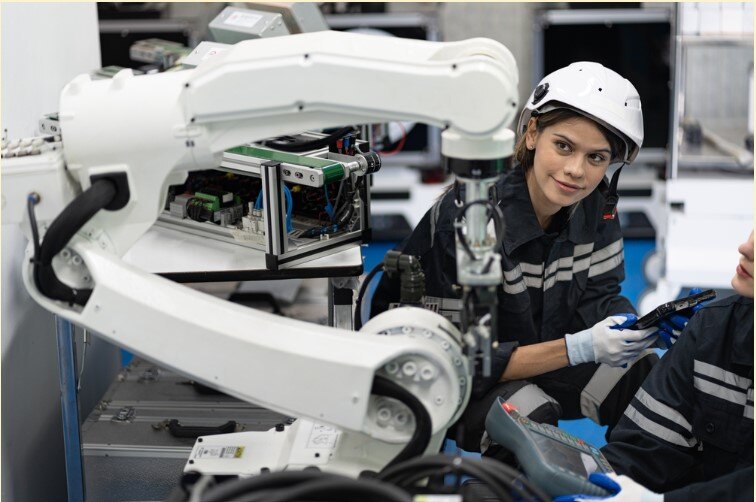The digital revolution of global industry has been underway for the past decade or so – and now that a vast majority of enterprises have made their preliminary digital investments, it’s time for phase two.
As we delve further into the fourth Industrial Revolution (or as we more often call it, Industry 4.0), business owners across the globe are busy strategising in their boardrooms with their department heads and stakeholders about how best they can allocate their growth budgets. For Australian business owners operating within the country’s most high-volume export markets like agriculture, mining, and fabrication, the decision-making process is likely to look a little different when compared to service-based industries.
Australia’s unique industry landscape has resulted in economic analysts identifying interesting patterns in the way domestic business owners are arranging their digital growth investments. We’ll be taking a closer look at these investment strategies today to really understand how Aussie business owners are budgeting for their own Industry 4.0 transition.

Prioritising operational investments
The most straightforward approach to strategic tech investing is by looking for an ROI related to streamlined operations. Investing in business technologies that save time and money whilst boosting efficiency or productivity make for easy jumping off points when it comes to digital transformation strategising.
Similarly, tangible equipment, hardware, or machinery can also be insured by updating business insurance policies, making these investments both safe and accessible for the majority of business owners. Contrastingly, SaaS (software as a service) investments are less likely to be prioritised first, primarily because the decision-making process for these software-based investments will naturally require input from staff – not just business leaders. It’s also harder for managers to gauge the immediate ROI of SaaS investments as these software offerings may come with their own unique learning curve and business owners must thus factor in the costs associated with staff training first.
Investments in scalable SaaS technology
Whilst Industry 4.0 hardware, equipment, and machinery may be easier to insure, install and implement in updated operational processes than integrating SaaS solutions, software offerings may actually be less cost-intensive in their initial investment – even if they take time to roll out company-wide.
In fact, SaaS developers and providers actually know that the majority of their B2B customers invest tentatively in their software, going so far as to trial the software package in smaller teams first to determine the best methods for orchestrating staff training and mapping out digital transitions from existing systems to the new SaaS offering. That’s why so many SaaS providers offer extended free trials for their software solutions.
This is also the reason why we’re seeing more and more SaaS solutions that harness the power of generative AI to effectively provide open source software with low- or no-code interfaces. With open source business software, business owners don’t just enjoy the freedom to scale their SaaS package in accordance with their own digital transformation strategy – they can also develop an SaaS solution that’s tailored to their business needs, namely because it’s actually being powered by their own unique company data.
Using generative AI-powered software also allows SaaS providers to roll out solutions faster and cheaper, making these tech investments increasingly affordable. The costs are dropping but the value is on the rise, making now the perfect time for business providers to get in on the ground floor of Industry 4.0 SaaS offerings.
Data-driven decision-making
It’s not just SaaS offerings that are scalable, however. The incorporation of AI capabilities in the IIoT (industrial internet of things) has allowed for connected equipment, machinery, and other business technology to actually play a role in recording and harvesting operational data for that business. For agriculture, mining, and materials production plants, the ability to record operational data across both connected devices and centralised software offerings is vital to maintaining a top-down view of business efficiency.
With this tailored business intelligence, business owners and their stakeholders can identify opportunities for further optimisation faster, easier, and cheaper. The ability to maintain this data-driven decision-making process naturally helps business leaders focus on bigger picture development strategies, leaving operations improvement processes to department heads and their teams – the employees with boots on the ground, so to speak. This zoom-in and zoom-out capability on data analysis is naturally a game changer for Australian agriculture and mining sector corporations, who typically manage multiple interconnecting sites and facilities across vast geographic distances.
As businesses invest more in connected AIoT tech, recorded business data will naturally also grow more dynamic, allowing business owners to make connections between interrelated data sets to attain an even broader scope of their company’s operational efficiency. So in essence, business leaders can use the cost savings from preliminary AIoT investments to fund future investments, ensuring that business development budgets don’t have to grow in order to maintain their potency in Industry 4.0.
People first, technology second
A good business owner hires talented people. A great business owner invests in those people as well. In this regard, the most cost-effective method for budgeting for Industry 4.0 transitions is to make sure business owners are fully utilising their human resources all the way through their growth strategy.
If there’s an overinvestment in technology without investing in staff training or even upskilling, then business owners run the risk of automating their business operations for static market conditions and failing to implement manual processes for amending these workflows when amendments are required. In other words, if you don’t give your staff something else to do as your digital investments take fruit, then you could end up losing staff due to job dissatisfaction.
This is why maintaining a people-first approach is vital for navigating digital transformation strategising. If business owners shift focus on tech implementation to what opportunities will be available for their staff following the company’s Industry 4.0 transformation, then they’re more likely to retain a digital-ready workforce that’s ready to innovate.
Australia’s mining sector provides a great example here of a people-first approach. As digital technologies allow mining equipment to be operated remotely, mining industry workers are finally able to do away with their intense on-site working expectations. For the first time in history, mining industry professionals have opportunities to work from home, overseeing machine performance and plant output/operations from a desk in their home office rather than flying hundreds of kilometres every fortnight to work for days on-site.
With these evolving professional requirements, mining industry professionals are taking on more technical skills building opportunities rather than the menial labour they had traditionally performed. In the age of Industry 4.0, these menial tasks are instead being automated, freeing up human resources to contribute to further business growth and development planning.
Digital investments: the key to sustainable Industry 4.0 growth
As you can see, harnessing the full potential of digital technologies is vital to ensuring a business can grow sustainably over the Industry 4.0 transition and beyond. Whilst part of harnessing that potential means staying strategic with your preliminary investments and how you both use and protect them, another component of sustainable digital growth naturally involves utilising the humans that will consult these technological offerings on a daily basis.
By allowing people to grow right alongside tech budgets and bottom lines, companies both in Australia’s unique market landscape and across the globe, can maintain a balanced digital transformation budget that provides a robust return in more ways than one.







